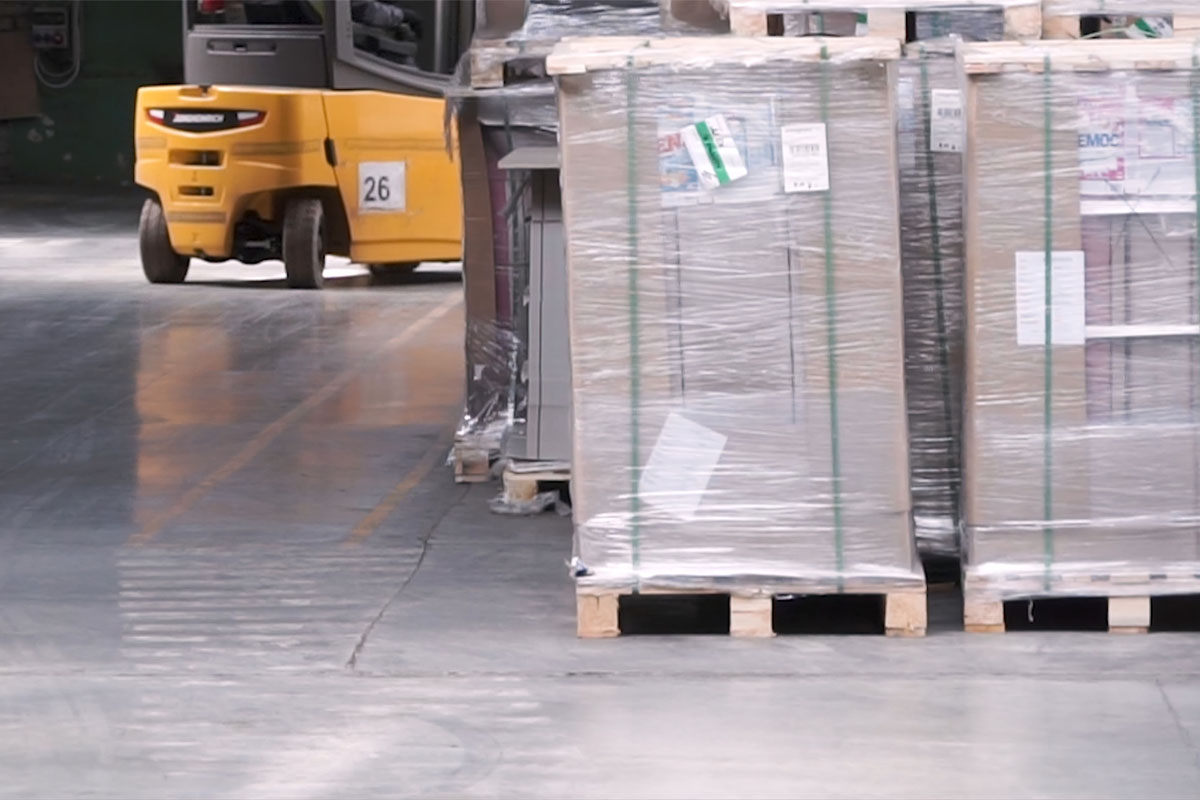When you are not uber familiar with all the packaging choices in the material handling industry, you may be wondering, “What is a skid?” Thankfully, that is a relatively somewhat easy question to answer concerning an industrial packaging factor that serves a very important purpose in material handling. Knowledge in the uses of this industrial packaging device is important to maintain utmost efficiency in the supply chain.
So when talking about the question, what is a skid, it’s better to begin with its definition. Simply put, a skid is a singular decked pallet or a platform on runners. Basically, it has a top deck to place your palletized products on but is not bottom decked, typically seen in pallets.
On a skid, the deck or platform rests on “skid” that make up the infrastructure of the skid. To put it another way, skids are place on the ground (or floor) on their stringers, such as sleds resting on its runners. A lot of people refer to the stringers on a skid as “runners,” and the word sled or sledge is usually used to explain skids used for moving freight.
What Is a Skid? Is It the Same as a Pallet?
As you most likely already know, the words skid, and pallet are usually used exchangeable in industrial packaging and logistics setting. Basically, the skid was the first kind of pallet ever invented or utilized. meaning that using the word terms exchangeable is mostly right, but it’s important to know the ideal uses and restrictions of each of them.
Skids typically are devoid of the strength, durability, and steadiness required for long-term warehouse objectives. When a palletized load is going to be continually loaded and unloaded, the force of moving the load and via forklift puts a lot of strain on pallets or skids. The bottom deck boards enable pallets to handle that force and stabilize its load, but that same stress could cause skids to fail. The nonexistent bottom deck boards merely make skids unstable from a packaging design outlook.
What Is a Skid Optimally Suited For?
Skids make an optimal foundation for heavier machinery. They enable the machinery to be moved from the manufacturer to its last destination and can serve as a lasting foundation after it arrives. The skid keeps the machinery, like agricultural units, off the floor. A skid also enables heavy equipment to be moved into an adequate position, something that is unable to accomplish with a pallet. Basically, a skid is usually used as a lasting foundation with the benefit of being mobile when required.
Custom Skids
Customized skids can be manufactured to use the right materials and designed for your specific product usage, transportation requirement, weight, and intentional use. Manufacturers using skids as a lasting placement for their products usually custom design skids to fulfill their particular needs.
There are occasionally times when a skid is the best option since it saves on materials. For instance, when a skid is used for significantly heavier items that are only going to be moved once. The building materials industry uses skids for items like cement, brick, stone, and even sod. There also have been instances in which skids are used for transporting steel and metal. The premise here is that these kinds of products need the least costly packaging possible to get the product to their end-user. These skids can be more budget friendly since they don’t have bottom deck boards. These are the types of considerations you need to think about when you’re establishing your total expense of packaging.
Skids and Pallets In Phoenix
Pallets can be used for many different DIY projects. There really is no limit to what you can build. You are only held back by your inventiveness.
Whether you’re looking for used or new pallets for your next weekend project AAA Pallets has you covered.


